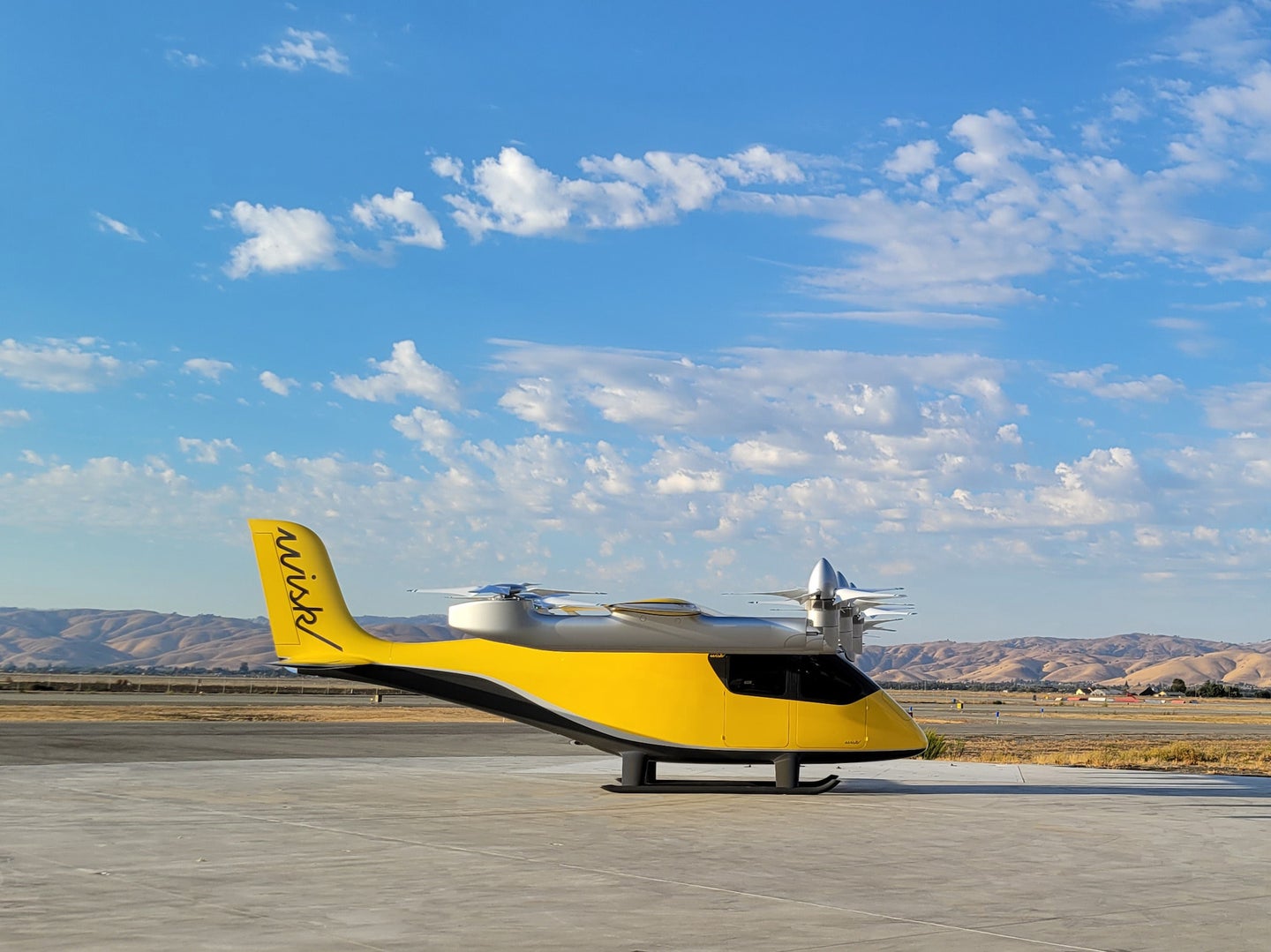Wisk’s next-gen air taxi aims to transport four passengers with no pilot
The company is backed by Boeing and has big goals for autonomous flight. Here's what they're up to now.

Last week, an experimental electric commuter airplane from Eviation made a very brief flight for the first time. At the controls of the aircraft was a tried and true form of aviation technology: a human pilot.
Meanwhile, a different firm—Wisk Aero, which is backed by Boeing—unveiled the latest version of its electric flying machine today, and it’s designed to fly with no pilot at all. It’s an air taxi, intended to transport four passengers (and no human aviator) over distances of 90 miles, perhaps less for a smaller hop. The goal is to be an all-electric, driverless Uber in the sky that cruises at 138 mph.
Here’s what to know about this latest aircraft, and how Wisk’s approach differs from other companies.
The newly released plane has a slightly boxy appearance and is Wisk’s sixth-generation aircraft. While in the past the company has referred to its fifth-gen aircraft as “Cora,” this one is simply called Generation 6. It hasn’t flown yet. It is designed to employ 12 motors that spin 12 propellers to enable it to take off, fly, and land.
The dozen motors have different jobs. The 6 motors in the back spin what are known as lift fans, which are oriented parallel to the ground and remain that way. Those produce vertical thrust for takeoff and landing. The six motors in the front control six propellers that can tilt, so at takeoff and landing they would work together with the lift fans, with all of them oriented the same way, to allow the aircraft to move up and down. During forward flight, the tilting propellers in front of the wing would be positioned like normal propellers, and the lift fans behind the wing stop and remain motionless. Previous generations from Wisk had a propeller in the back to push the aircraft forward, but this one does not.
The reason the company killed the propeller in the back is “simplicity of design,” says their CEO, Gary Gysin. While the previous setup needed two different motor types because it had that pusher propeller, the new one can utilize just one type of motor. “Right now, we have the same motor for all 12, [but] the front ones tilt,” he adds. He also notes that the new version is quieter and more efficient.
What’s less simple, at least from a regulatory standpoint, is the company’s plans to make these air taxis self-flying. “The aircraft will be fully autonomous and run its route,” says Gysin. “There’ll be a human in the loop that’s on the ground—more like a supervisor. They don’t have a stick, they don’t have a rudder. They’re not actively controlling the aircraft.”
The humans on the ground will be like air traffic controllers. “They’re watching the telemetry of the aircraft,” he says. The goal is for one human operator on the ground to be able to monitor 10 different flying machines in the sky, says Gysin, although Chris Brown, a spokesperson for the company, adds that that goal is for the future, and that an initial ratio might be more like one human for three unpiloted aircraft.
Gysin compares what the aircraft will be like someday to a car with level-four self-driving capabilities. In case you don’t have the levels of car automation memorized, they come from an organization called SAE International. According to SAE, level four has “automated driving features [that] will not require you to take over driving.” That’s in contrast to level three, which involves a system that could ask you to assume control. Meanwhile, level five is similar to level four, but could operate autonomously in “all conditions.” In other words, by aiming for an airborne version of level four, Wisk wants to make an aircraft that can fly itself with zero control input from someone inside of it, but in limited conditions.
That represents a different approach from competitors in the electric air taxi space. Joby Aviation, for example, has an air taxi that seats four people and is designed to be flown by a pilot in the fifth seat. Beta Technologies flies an electric aircraft designed to carry five people, with a pilot as person six. Archer is doing something similar, with plans for an aircraft called Midnight that can hold four and be flown by a fifth, although their current-gen aircraft is called Maker, and is just a demonstrator that flies with no one on board. (Archer and Wisk are involved in a lawsuit.)
Finally, another company, Kitty Hawk, was working on a one-person self-flying airplane, but they recently announced that they are shutting down, leading the Washington Post to ask, “If a Google billionaire can’t make flying cars happen, can anyone?” (Kitty Hawk has been, and still is, a “minority investor” in Wisk, says Gysin.)
In terms of its automation-first approach, Gysin argues that that will be an asset but concedes that it will slow their process towards getting regulatory approval to carry passengers. “What we’re doing is automating all the mundane tasks” of flight, he says. “It’s going to be fundamentally safer [than a piloted aircraft]—it will be harder, for sure, to get certified.”
“All the regulations are built around having a pilot in the cockpit,” he adds.
Ultimately, how the industry and its multiple players end up truly shaking out remains up in the air.
Watch a video about Wisk’s gen-six aircraft, below.

